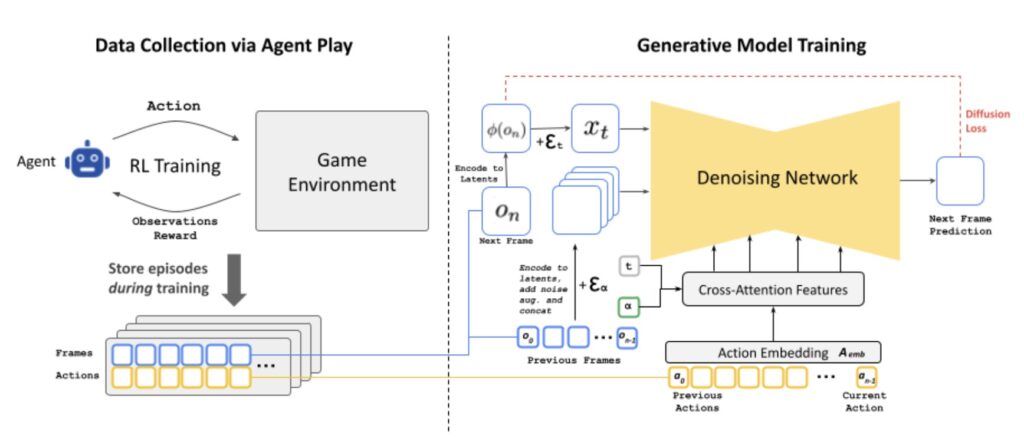Discover GameNGen, the Neural Network-Based Engine Bringing Classic Games to Life with Cutting-Edge AI.
In a groundbreaking development, diffusion models—traditionally used for AI image generation—are now being employed as real-time game engines, opening up new possibilities for interactive world simulations. Here’s what you need to know about this innovative approach:
- GameNGen’s Unique Approach: GameNGen utilizes diffusion models to simulate the classic shooter DOOM in real-time, achieving playable performance at 20 frames per second without relying on traditional game engines. This neural network-based game engine represents a significant shift from manually programmed systems.
- Advanced Training Techniques: The diffusion model behind GameNGen is trained in two phases. Initially, a reinforcement learning agent plays DOOM, generating training data from its actions and observations. This data trains the diffusion model to predict subsequent frames, utilizing noise augmentation to stabilize long-term generation and maintain visual quality.
- High-Quality Simulation: Despite its reliance on only a few seconds of game history, GameNGen maintains a high level of visual fidelity, with predictions comparable to lossy JPEG compression. Human evaluators struggle to distinguish between real and simulated game footage, showcasing the model’s effectiveness.
GameNGen represents a novel application of AI technology, merging diffusion models with game simulation to achieve impressive results. By leveraging these models’ ability to predict and generate game frames interactively, GameNGen offers a glimpse into the future of AI-driven gaming engines.


